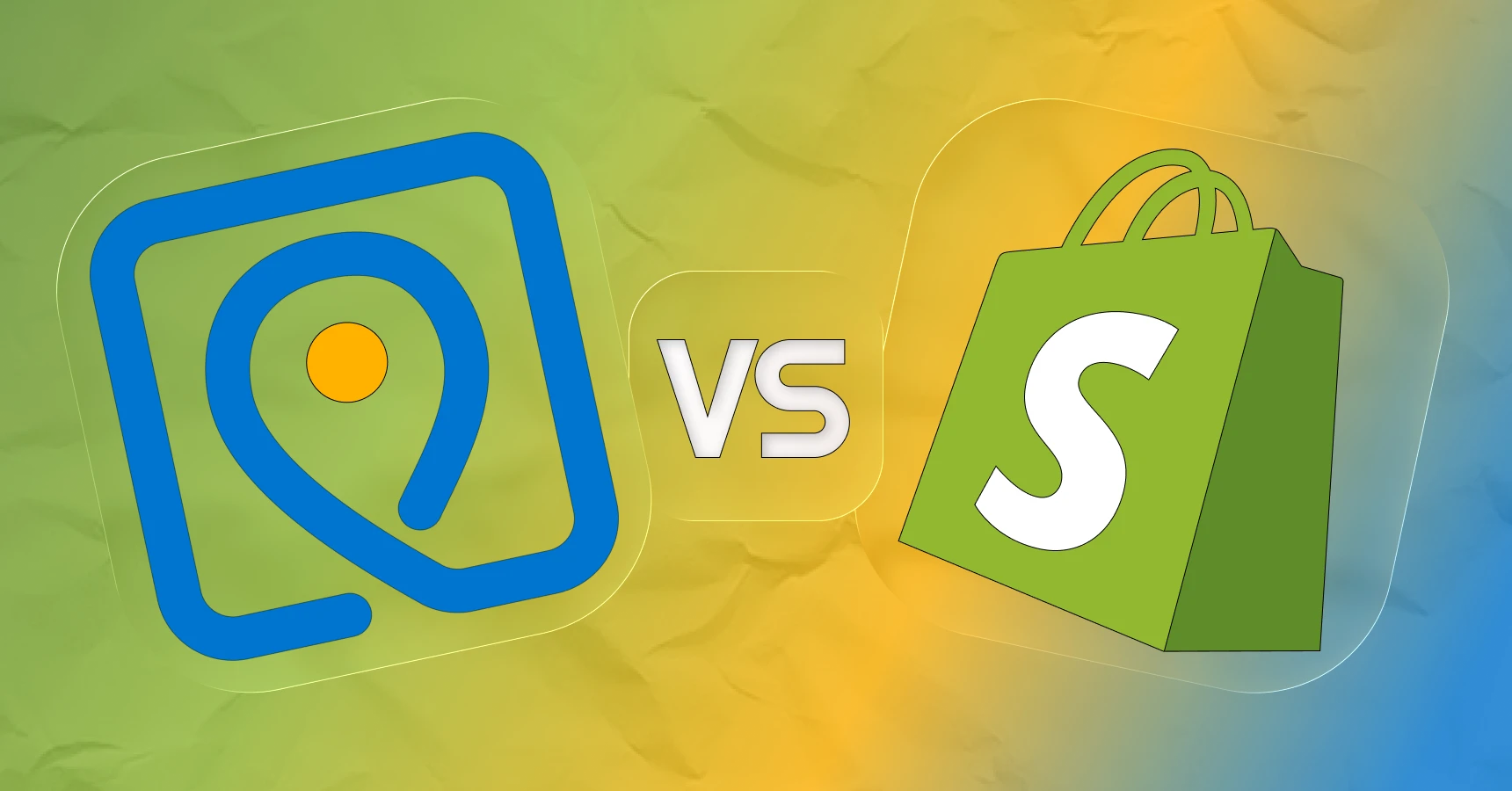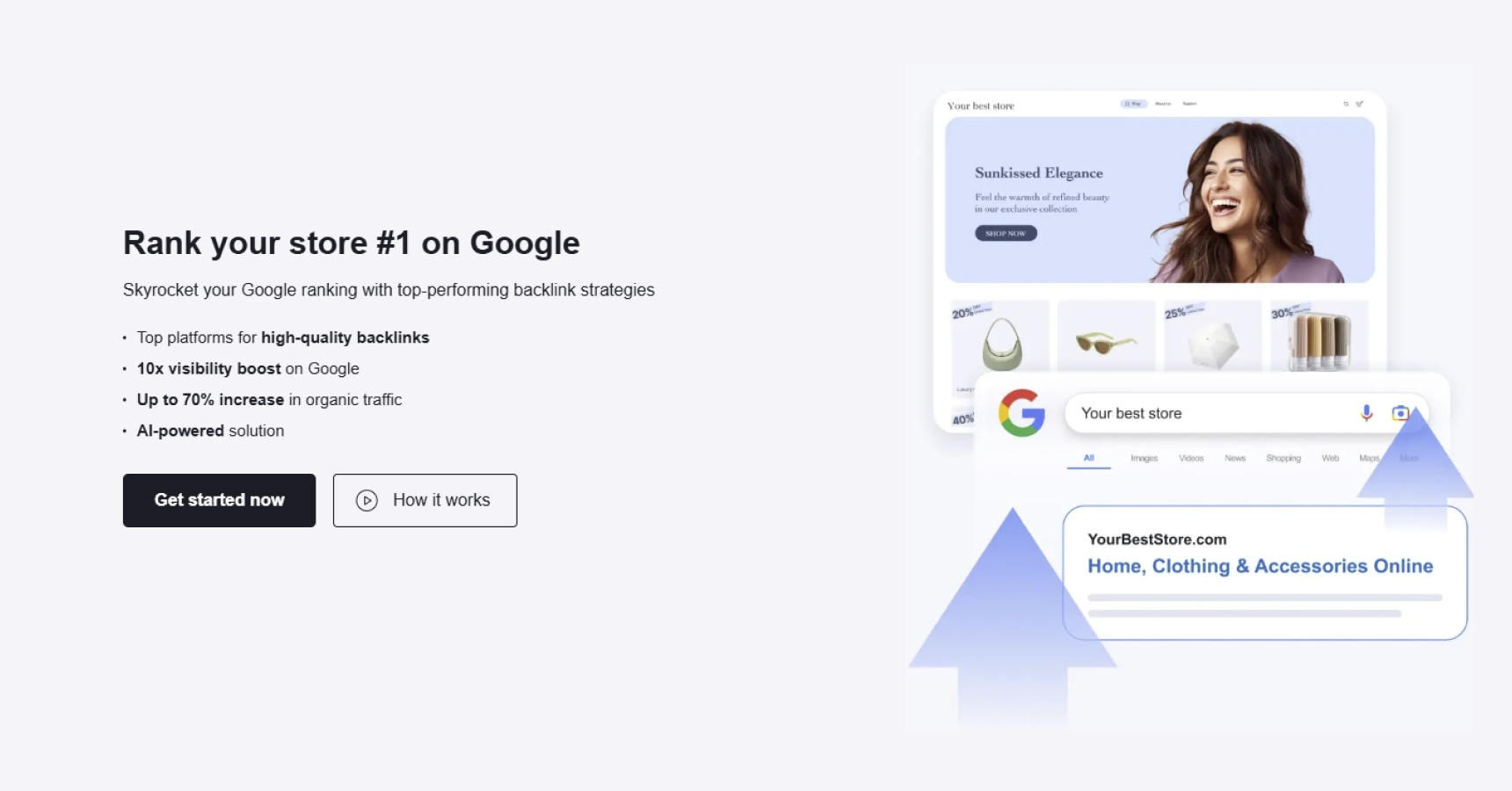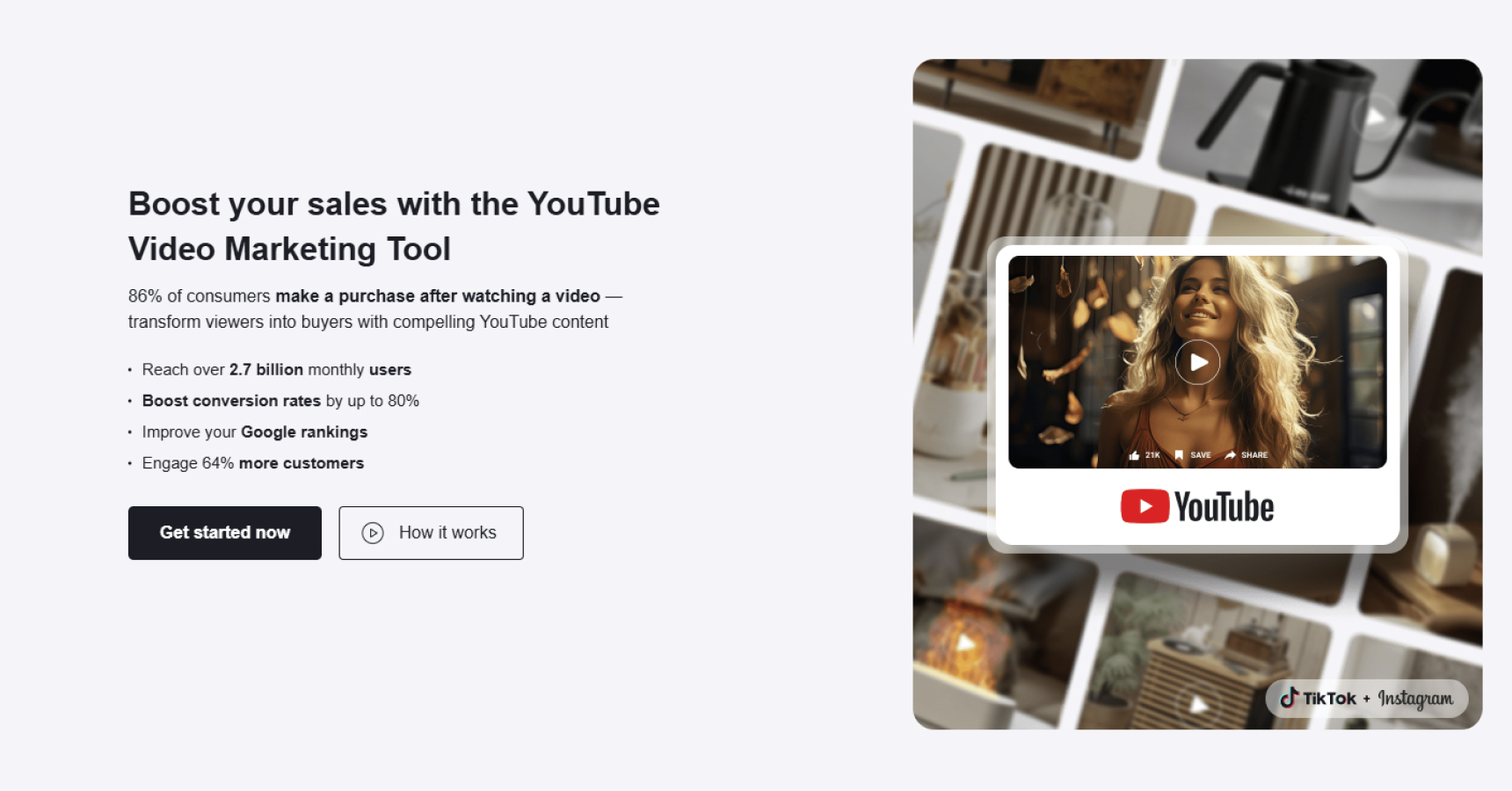When you’re setting up an online business, the platform you choose can make a huge difference. Among the many names out there, Sellvia vs Shopify is one of the most common comparisons people make when deciding how to start their ecommerce journey. Both allow you to create an online store, both are popular with entrepreneurs, and both have strong reputations.
But here’s the thing: while they aim to solve the same problem – helping you sell online – they approach it in very different ways. That’s where things can get confusing. Should you go with a fully flexible platform like Shopify, or opt for something more streamlined like Sellvia? In the Shopify vs Sellvia debate, the answer really depends on your goals, budget, and how quickly you want to get started.
This article will break it all down for you. We’ll go deep into the Sellvia vs Shopify comparison, looking at pricing, ease of use, features, fulfillment, and more, so you can figure out which platform truly fits your business goals in 2025.
Sellvia vs Shopify at a glance 👀
Think of Sellvia vs Shopify as comparing an all-in-one package to a toolbox. Sellvia provides you with a store, products, and fulfillment built right in. You don’t need to hunt for suppliers or stress about long delivery times. Everything is handled under one roof, and that saves you time and headaches.
Shopify, on the other hand, is a flexible platform where you can design your store and add features through apps. It gives you a lot of freedom, but it doesn’t give you products or fulfillment out of the box. That means you’ll need to put in more effort to source suppliers and keep things running smoothly. In the Shopify vs Sellvia discussion, this is one of the biggest differences entrepreneurs notice right away.
Here’s a quick comparison table:
In summary, this table shows that Sellvia is designed for simplicity, speed, and an all-in-one approach, making it perfect for beginners and small businesses who want to start selling quickly. Shopify, on the other hand, offers greater flexibility and customization, which is ideal for larger or highly specialized stores—but it often requires more time, effort, and additional costs.
For most new sellers in 2025, Sellvia clearly provides the faster, easier, and more practical path to success.
Ease of use and user experience 🖱️
When you’re just starting out with ecommerce, one of the biggest roadblocks is figuring out how to actually set everything up. If the platform feels complicated, chances are you’ll waste time trying to understand menus, settings, and apps instead of focusing on sales. That’s why ease of use matters so much, especially in the Sellvia vs Shopify comparison.
Shopify has a polished, professional interface and tons of customization options. But with that flexibility comes complexity. To get your store looking the way you want, you might need to pick a theme, adjust code, or install apps for even basic features. It’s powerful for sure, but for beginners it can feel like a maze. On top of that, managing different apps for marketing, SEO, or reporting often makes the experience less seamless.
This is one of the reasons why, in the Shopify vs Sellvia debate, many beginners lean toward Sellvia.
Sellvia is built with simplicity in mind. The setup is fast – you can have a store up and running in a day with a ready-made catalog and marketing materials included. You don’t need to worry about designing a website from scratch or learning coding tricks. Everything from adding products to processing orders is streamlined into one dashboard.
This makes Sellvia especially beginner-friendly, but even experienced sellers appreciate how little time it takes to get things done. ⏳
Another big plus is that Sellvia offers turnkey stores – complete websites designed and set up for you. That means you don’t have to stress about layouts, plugins, or technical details. You basically get a store that’s ready to start selling, and all you need to do is focus on attracting customers.
To put it simply:
- Shopify = more flexibility, but it requires more effort and technical knowledge.
- Sellvia = super straightforward, with a clean experience and ready-to-use stores.
For anyone who wants to skip the hassle and jump straight into running a business, Sellvia clearly wins in the Sellvia vs Shopify battle for ease of use.
Pricing breakdown: Sellvia vs Shopify costs 💵
Budget plays a huge role in your choice, and the differences become very clear when you compare Sellvia vs Shopify closely.
Our pricing is simple and straightforward. You can start with a free trial, and then move to a paid plan that covers everything you need. That includes the store, products, fulfillment, and shipping. There aren’t hidden extras or constant app fees. You know exactly what you’re paying, and it’s usually less than what you’d spend building the same setup on other platforms.
This makes Sellvia especially appealing for entrepreneurs who want to keep costs predictable.
Shopify uses a tiered system with different monthly plans. On paper, the entry-level price seems fair, but the real costs creep in when you start adding apps and tools. Need advanced email marketing? That’s another monthly fee. Need dropshipping suppliers? You’ll pay extra there too. And unless you use Shopify Payments, you’ll also face transaction fees. It adds up quickly, especially if you’re on a budget.
This is one of the key points in the Shopify vs Sellvia debate, since Shopify often ends up being more expensive in practice.
👉 Verdict: In the Sellvia vs Shopify pricing battle, Sellvia is more cost-effective because it bundles everything you need, while Shopify’s costs often spiral as your store grows.
Features and tools you get 🛠️
Every platform has its strong points, but in the Sellvia vs Shopify comparison, Sellvia gives you more practical tools to actually make sales.
With Sellvia, you don’t just get a store builder – you get a full ecommerce ecosystem. Products are already tested and ready for you to sell. Descriptions, images, and even marketing materials are included. The fulfillment system is built-in, meaning every order is processed automatically and shipped from U.S. warehouses. For a new business owner, that’s huge, because it cuts out all the guesswork and speeds up results.
Shopify, of course, has its strengths. It’s known for having thousands of apps and integrations. If you want a highly customized store with unique branding and features, Shopify can deliver. But all that power comes at a price: complexity. To get the same “ready-to-go” functionality that Sellvia includes, you’d need to research and connect multiple apps yourself.
This is why many beginners, when looking at Shopify vs Sellvia, realize that Shopify demands more time and extra costs.
👉 Verdict: In the Sellvia vs Shopify matchup, Sellvia clearly wins for people who care about selling fast without endless setup.
Marketing and SEO tools 📈
When it comes to growing an online store, it’s not just about having products on your website. You need people to actually find your store first. That’s where marketing and SEO tools make all the difference, and it’s also where the Sellvia vs Shopify comparison becomes very interesting.
Shopify gives you a solid starting point. It has built-in SEO basics like customizable title tags, meta descriptions, and sitemaps. You can also integrate apps from the Shopify App Store to boost your marketing game – from email campaigns to social media integrations. But here’s the catch: most of these features come through third-party apps, which often mean extra costs and a bit of a learning curve.
If you want advanced SEO or serious marketing automation, you’ll likely need to stack up multiple apps, and that can get overwhelming (and pricey 💸).
Sellvia, on the other hand, takes a more straightforward route. It already comes packed with done-for-you marketing materials. For every product in its catalog, Sellvia provides ready-to-use promo content like descriptions, ad creatives, and social media visuals. This is a huge time saver because you don’t need to figure out how to market your items from scratch.
Plus, our catalog is optimized with SEO-friendly product titles and descriptions right out of the box, so you’ve got a head start in ranking on Google.
Another big advantage is that we makes advertising easier. Since we deliver ready-made Facebook and Instagram ad materials, you can launch campaigns faster without hiring designers or copywriters. This is especially helpful if you’re just starting out and don’t have a big marketing budget.
In the Shopify vs Sellvia debate, this is one of the areas where Sellvia offers a clear edge.
To sum it up:
- Shopify = more flexibility but also more work (and more apps to pay for).
- Sellvia = a plug-and-play solution with ready SEO content and marketing kits included.
👉 If you want full control and don’t mind testing dozens of apps, Shopify works fine. But if your goal is to get traffic and sales rolling quickly without extra headaches, then in the Sellvia vs Shopify battle, Our built-in marketing and SEO tools put it ahead.
Shipping and fulfillment comparison 🚚
In today’s ecommerce world, shipping speed is everything. Customers don’t want to wait weeks for their orders, and slow shipping is one of the top reasons online stores lose buyers. This factor plays a huge role in the Sellvia vs Shopify comparison.
This is where Sellvia leaves Shopify behind. All Sellvia products are stored in U.S. warehouses, so orders reach American customers in 1–3 business days. That’s comparable to Amazon Prime speed. Fast shipping not only keeps customers happy, but also helps build trust and repeat business.
Shopify doesn’t have this advantage unless you join the Shopify Fulfillment Network, which isn’t available everywhere and can be expensive. Most Shopify sellers rely on overseas dropshippers, which means delivery can take weeks. That delay often leads to refund requests and unhappy customers. In the Shopify vs Sellvia debate, this is one of the most noticeable differences for store owners and their buyers.
👉 Verdict: When it comes to delivery times, our fast U.S. shipping makes it the clear winner in the Sellvia vs Shopify showdown.
Customer support and community 🙋
Support matters more than people realize. When something breaks, you need fast answers – and this is another key area in the Sellvia vs Shopify comparison.
Sellvia has dedicated 24/7 support, and the big plus is how personal it feels. Their team works closely with sellers, making sure beginners get clear answers without having to dig around. That kind of hand-holding can be a lifesaver in the early stages.
Shopify’s support is also 24/7 and reliable, but what really sets Shopify apart is its massive community. Millions of sellers use it, so you’ll find endless blogs, YouTube tutorials, and forums. But sometimes this can also be overwhelming – you’ll find ten different “solutions” to the same problem, and not all of them work. In the Shopify vs Sellvia debate, this makes the choice come down to whether you prefer direct expert help or a big pool of community resources.
👉 Verdict: For personalized help and a direct line to experts, Sellvia gives you more attention.
Apps, integrations, and customization 🔧
When it comes to integrations, Shopify is unbeatable in sheer numbers. From AI chatbots to advanced loyalty programs, you can customize nearly every part of your store. This flexibility makes Shopify especially attractive for established businesses that need very specific tools and don’t mind paying extra for premium apps.
Sellvia, on the other hand, takes a completely different approach. Instead of offering thousands of integrations, it builds everything in. You don’t waste time searching for apps, comparing reviews, or connecting third-party tools just to get your store running. In the Sellvia vs Shopify debate, this simplicity is a big advantage for beginners.
It means you can focus on marketing and sales instead of managing tech stacks or paying for endless add-ons.
👉 Verdict: Shopify has more options and customization, but our “everything included” model is far more practical for most sellers – especially if you want to start selling fast.
Analytics and reporting tools
If you’re running an online store, you can’t just guess what’s working and what isn’t. You need solid numbers. Analytics and reporting tools give you that clear picture – from how many people visit your store to which products actually make you money. This is a key factor in the Sellvia vs Shopify debate.
Shopify offers detailed analytics, but the depth really depends on your plan. On the cheaper plans, you only get basic reports like sales and traffic. If you want more advanced insights, such as customer behavior reports or profit margins, you’ll need to upgrade to a higher plan or add extra apps. These apps can add a lot of power, but they usually mean more subscriptions and a steeper learning curve.
For someone new, the amount of data can feel a little overwhelming. 📊
Sellvia, in contrast, keeps things clean and straightforward. Its analytics focus on what really matters for your business – product performance, order tracking, and sales growth. You don’t have to dig through endless charts; instead, you get a dashboard that highlights key numbers at a glance. Plus, since Sellvia also provides ready-made marketing kits, you can easily connect your campaigns to the results you see in your reports.
This makes it simpler to understand which ads are paying off and which products deserve more promotion.
Another big plus is that Sellvia integrates order management and fulfillment data directly into the reporting. That means you’re not just seeing sales; you’re also tracking how quickly orders get shipped and delivered. This helps you keep an eye on customer satisfaction without using separate apps.
In the Shopify vs Sellvia discussion, this built-in approach is a huge time-saver for busy entrepreneurs.
In short:
- Shopify = more advanced analytics, but you’ll probably need higher-tier plans or apps to unlock full features.
- Sellvia = clear, easy-to-read reports focused on the numbers that help you grow, no extra tools required.
For most beginners and busy sellers, our simple but effective reporting system can save a lot of time – letting you focus on selling rather than drowning in data.
Pros and cons ⚖️
Sellvia pros:
- Extremely beginner-friendly
- Stores come ready with products
- Super fast U.S. shipping 🚀
- Automated fulfillment included
- Affordable, all-in-one model
Sellvia cons:
- Limited customization for advanced users
Shopify pros:
- Highly customizable
- Huge app marketplace
- Large global community 🌍
Shopify cons:
- Expensive once you add apps
- Longer setup process
- Slower shipping (if using overseas suppliers)
Which one should you pick? 🤔
At first, it might look like Shopify vs Sellvia is a tough choice, but when you look closer, Sellvia clearly offers more advantages for most entrepreneurs in 2025.
Sellvia is simply better for people who want to launch quickly, keep costs under control, and provide customers with fast, reliable shipping. You don’t waste months on setup, you don’t bleed money on apps, and you don’t stress about fulfillment. It’s the smarter path for beginners, side hustlers, and even small businesses that want results without complications.
Shopify is still a great tool, especially if you plan to build a very customized, large-scale brand and don’t mind investing more time and money. But for 80% of sellers out there, Sellvia is the stronger choice.
Conclusion 🎯
So, who wins in the Sellvia vs Shopify showdown? While Shopify has the reputation and flexibility, Sellvia comes out ahead for most real-world sellers. It’s beginner-friendly, cost-effective, and provides Amazon-level shipping speed without the stress of managing suppliers.
If you want a fast, straightforward, and profitable way to start selling online in 2025, Sellvia is the better bet. The best part? You can test it risk-free with their trial and see for yourself how quickly you can get your store up and running.
If you are serious about starting an online business, the choice is clear. Sellvia gives you everything in one package – a ready-to-sell store, proven products, fast U.S. shipping, and 24/7 support. That means less time worrying about tech and more time focusing on sales. Do not wait to get started. Take advantage of the Sellvia offer today and launch your business the easy way.









